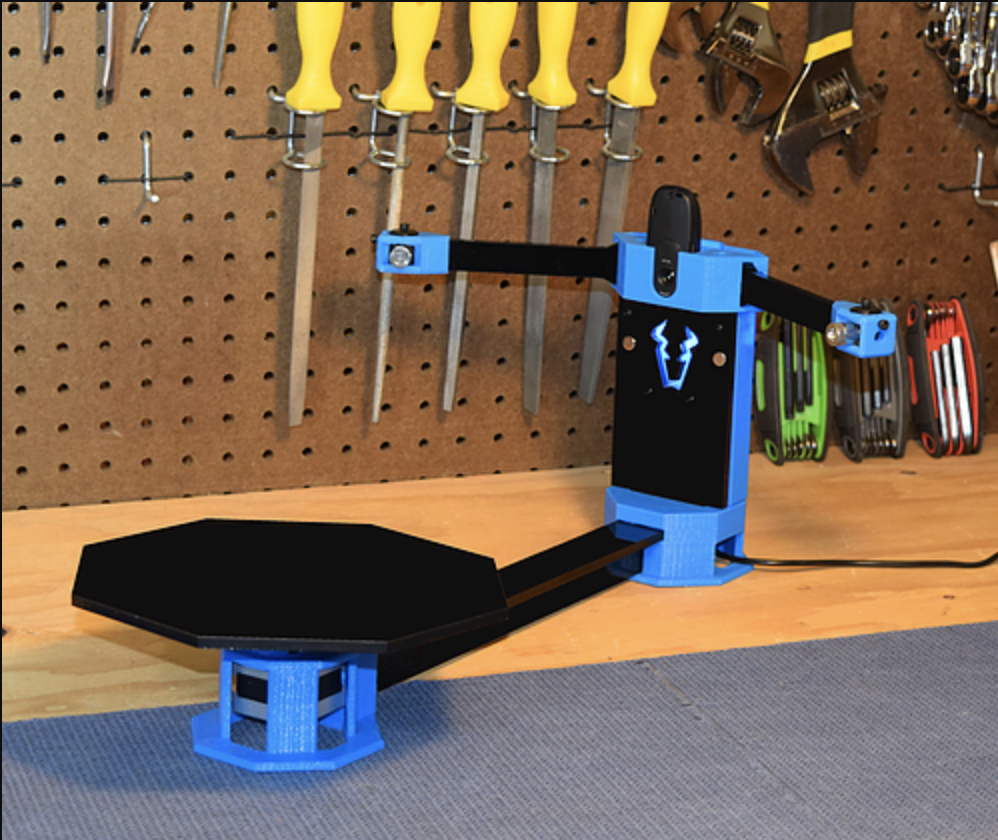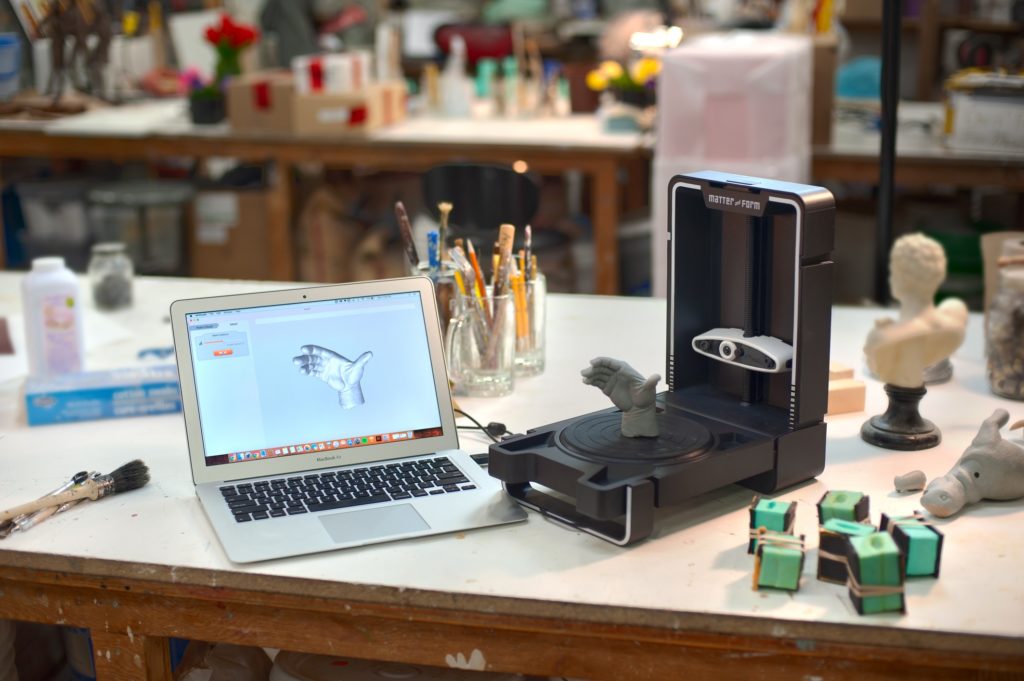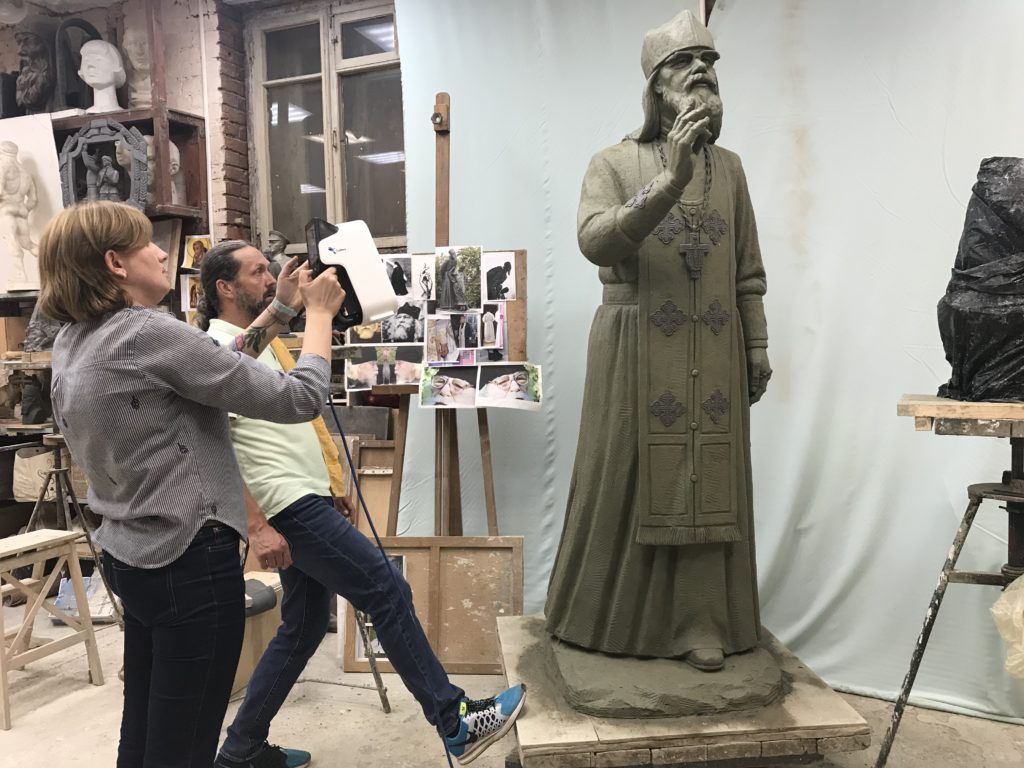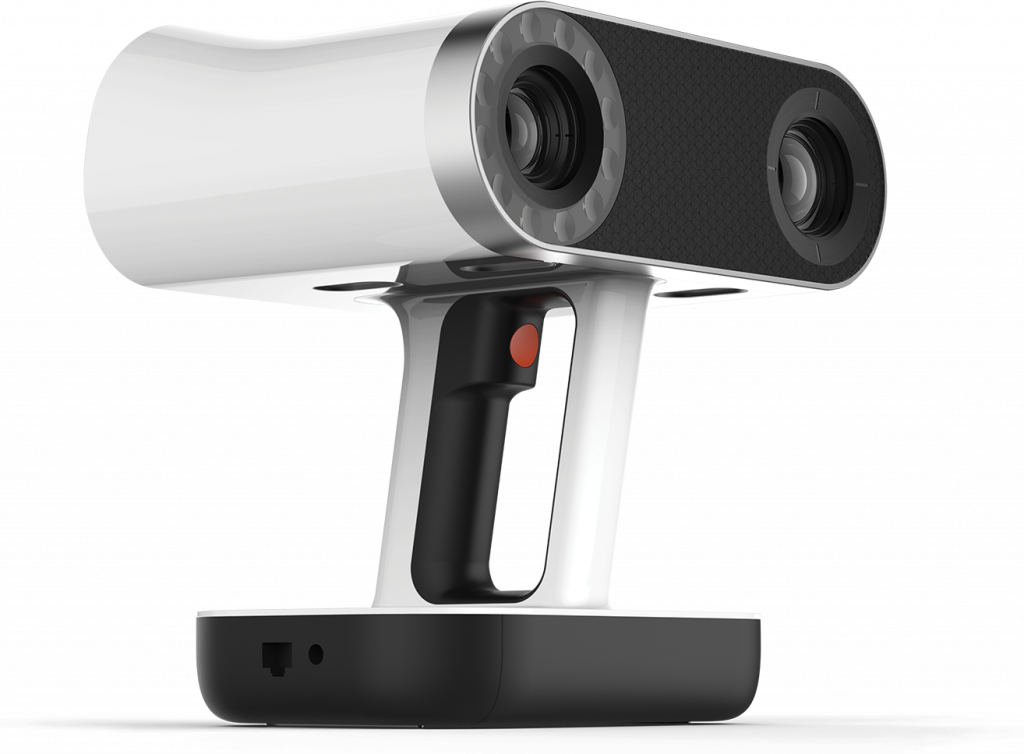3D scanning is now an engrained business process in industry, architecture, quality assurance and reverse engineering. It is, however, quite a difficult process to master. Many different 3D scanning technologies are best at only a few applications. In some cases, there is also overlap between technologies for a specific application. 3D scanning companies also tend to offer individual scanners per segment of the market and per application, as well.
There are, therefore, a lot of models and it can be confusing which ones to select or even to consider. No matter what the application or the scanner, however, there is operator skill and diligence involved. 3D scanning is still finicky and requires patience. What’s more, a lot of manual file fixing or use of automated file-fixing tools is required to get optimal results from files. 3D scanning is not easy and it will be difficult to master by the casual business or home user.
This guide is meant to help you orient yourself when buying a 3D scanner. There is no such thing as a “best 3D scanner.” There are hundreds of models that are oftentimes super-specific. If you’re an archeology department, an optimal scanner can depend on if you’re keeping it at the college or if it has to trek to the Sahel twice a year. Some scanners could be best for this department if they are used by experienced operators, while others could be better if inexperienced students operate them. The best 3D scanner for measuring, if you assembled your bumper correctly will probably not be the best one to measure on a conveyor belt moving thousands of parts across it. The best scanner for an entire car is one model and a street is another one. Depending on the size and kind of the object and what you need to capture, an entirely different vendor or technology could be more appropriate.
We hope that this guide will point you toward some viable options, given your specific applications. We hope that it can help educate you and will help your business. We are aware just how much people like Top Ten Lists, but, in this case, it would be nonsensical to have one.
Inexpensive 3D Scanners, $200 to $1500
At the sub $1,500 portion of the market, there will be a lot of manual labor spent on the scanning and subsequent file handling. A steady hand, patience, and a fondness for repeating movements will aid your progress.
The Ciclop 3D Scanners $100-$280

The BQ Ciclop is also sold as a number of different kits from companies such as Banggood, Biqu, and Ali Express. It was commercialized by CowTechEngineering from Montana. The Ciclop is an open-source 3D scanner rig that requires assembly. There is also the open-source Horus software. Here is an Instructable on how to make it. This is the documentation from RepRap. From all the sourced vendors, the Cow Tech version has the most solid appearance. You can print a lot of these parts, as well.
This is essentially the RepRap Mendel level 3D scanner. Zen master patience and surgeons’ hands will get you places. The software isn’t great and the momentum is not really there as an open-source project. It has amazing potential, however, if the right open-source people gave it some oomph.
Matter and Form 3D Scanner V2 & Quickscan $749

The Matter and Form 3D Scanner V2 is small, foldable and compact. It comes with good software that is easy to use. The product is now almost $300 more expensive than the previous iteration, which makes it a difficult buy. Yes, it does work, but it will not work all of the time and it will require a lot of manual tweaking and repeated scans. Furthermore, the quality is not stellar. Whereas, before I found it easy to recommend, at this price point I do not.
The Structure Core by Occipital with Skannect Pro $399
 Occipital has been plugging away at making the Structure Core and Structure Mark II Sensor more powerful and easier to use. The sensors are suited for scanning rooms and other medium-detail, medium-sized objects. It’s good for fast scanning, but not really for highly detailed applications. It is set up as an offering to be attractive for developers and firms on which to build their business. If this is your application or you’re a developer and want access to an SDK, then these offerings should appeal to you. Likewise, if you’d like to integrate machine vision or something similar into your robot or device, it could be interesting.
Occipital has been plugging away at making the Structure Core and Structure Mark II Sensor more powerful and easier to use. The sensors are suited for scanning rooms and other medium-detail, medium-sized objects. It’s good for fast scanning, but not really for highly detailed applications. It is set up as an offering to be attractive for developers and firms on which to build their business. If this is your application or you’re a developer and want access to an SDK, then these offerings should appeal to you. Likewise, if you’d like to integrate machine vision or something similar into your robot or device, it could be interesting.
Mid-Level Scanners, $1500 and $5000
Scanners in this segment will require 3D file knowledge to operate and will be more finicky than other products that you would buy at this price point. But you should find the extra investment worthwhile, if you aim to scan regularly.
Shining 3D Einscan SP $2200

Do also consider the Einscan SE, but the more complete SP will suit more needs. Shining 3D has been steadily improving these structured light desktop scanners for a few years now. The software has always been their Achilles heel and that is still a weak point. Build quality is not great, but it is an affordable and interesting choice for high-quality scan output.
NextEngine 3D Scanner HD $3000

The NextEngine laser scanner has NextStudio software and a turntable. This is a very easy to use 3D scanner, especially for color and detail capture applications. If you’re an artist or museum, this is a great choice, but it does not work well with shiny objects. Users that are happy with their NextEngine usually completely love them. The software is good and it is a very affordable unit with great capabilities. Remarkably, Industrial Light & Magic used this inexpensive scanner for the film Rogue One.
Thor3D Caliby $4400

Thor3D has been offering good value 3D scanners for over six years. The quality is not stellar, but the handheld Caliby scanner is a fast solution that could work for you. Unlike a lot of other items, this does work well for shiny objects.
Professional Scanners, $5000+
These are systems that are above $5,000 and, more often, above $10,000. These should be considered if you would use them as a day-to-day part of your business.
Faro Freestyle 2 – $10,000+
FARO is one of the leaders in measurement and inspection scanners and its offering is robust and pricey. FARO’s scanners come with excellent software, such as the company’s Scene package. The Freestyle 2 is a scanner specially made for accident reconstruction and is a robust single, self-contained unit that does not need to be connected to a PC to run. Super high resolution and built to be used in many conditions, Faro have a number of equally specialized products for many different applications.
Artec Eva – $14,000

A trusted 3D scanner that is versatile and can be used for many applications. This handheld device comes with quite a complete software toolkit for structured light scanning of medium-sized objects.
Artec LEO – $23,000

A very fast capture scanner with super easy-to-use software that helps you identify where you still need to scan, the Artec LEO is about as idiot proof as handheld scanning is capable of achieving at the moment. Artec Studio is a powerful software package. All in all, the Artec LEO is super simple to use and close to what you want in a scanner.
Final Thoughts
A lot of learning, skill and process can be very specific to an individual object, 3D scanning technology or application. Shiny things and organic things can have different optimal technologies. If you want to measure something or if you’d like a full-color digital copy of the object, you will need different technologies. Measure twice cut once is a nice adage, but is certainly true for 3D scanning.
I’d always recommend using services initially, such as the excellent Direct Dimensions. They can advise you on the right technology or technologies that you would need. You can then test if the output was sufficient for your application. Only then would I try to rent scanning equipment and, subsequently, once I’ve actually tried it, I’d purchase the relevant scanner.
You should also orient yourself on the relevant fixing software for your output needs. I’ve rarely seen people less happy with anything than their 3D scanners. If you buy the wrong one, it could be useless to you. So, take the time to explore the alternatives.
A more expensive scanner will tend to work better, require less manual labor, and have a higher resolution. It’s important to take the entire process into account from a cost and usability perspective. Some scans may cost you an entire day: do you have the personnel or time for that? If your engineer is $100 per hour, does it make sense to make her spend three more hours per week scanning something and should you, therefore, get a more powerful system? Some of these scanners can go for $40,000 or over $100,000, but may end up being worth it because they alone can do what you need or because they will save you mountains of time. You can also get them for around $200, but with scanning, the lower-end solutions often require a lot of manual labor.
Subscribe to Our Email Newsletter
Stay up-to-date on all the latest news from the 3D printing industry and receive information and offers from third party vendors.
You May Also Like
3D Printed Heat Spreader Could Improve Efficiency of Electronics
The low-hanging fruit for decarbonization has long been improving the efficiency of existing systems, hence the justification for LED lights and ENERGY STAR certified appliances. While such minor moves are...
3D Printing News Unpeeled: Marine Gearboxes, 3D Printed Motors and $1.7 Million in Seed Funding
UK based Equipmake just released their Ampere-220 e-axle system. The system, which is meant for high performance electric cars, was similar to one released on the Ariel HIPERCAR. It has...
CEAD Unveils 36-Meter-Long 3D Printer for Abu Dhabi’s Al Seer Marine
CEAD, a Dutch original equipment manufacturer dedicated to large-format 3D printers, has unveiled what it claims to be the world’s largest robotic arm-based 3D printer. At 36 meters long and...
3D Printed Biocomposites Could Help Reduce Marine Plastic Pollution
Concerns about the impact of plastic litter and microplastics in the oceans are at the forefront of environmental study. For decades, the marine environment has suffered from the degradation of...




































